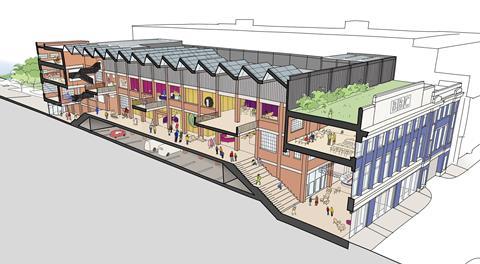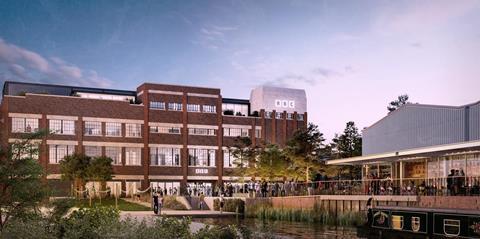Cities can lead the way in driving forward the reuse, conservation and net zero agendas, writes Dav Bansal

Birmingham is at an important crossroads. It has a rich history of brutalist and modernist structures, still deeply inherent to its heritage and character. It’s also a city that is booming, with many major developments underway to transform it into a greener, healthier, twenty-first century metropolis. And with embodied and operational carbon top of the agenda, it is inevitably set to face a lot of complex decision-making around the future of individual buildings.
I believe strategic city regeneration frameworks can help to resolve inevitable tensions that arise from these planning decisions; creating a future vision of the city that has layers of history running through it. Layers that are there because the city has kept those twentieth century buildings and repurposed and reused them, in tandem with paving the way for the city’s many new and upcoming developments.
Of course, there is always a complex balance to strike. The drive to net-zero carbon works in favour of retaining more buildings, reinforcing the idea what we should work with what we’ve got rather than demolish and start again. But projects should not be retained for their embodied carbon alone - we should also seek to understand their social and heritage values and the contribution they can make to the overall vision and purpose of a place, and how they may underpin, or impede our desire to create a more liveable, inclusive city.
Central government may be stepping away from its environmental targets, but cities need to hold on to this ambition and set environmental and heritage aspirations in a joined-up way
From a planning perspective, there is no specific requirement for embodied carbon to be addressed in decision making, and targets can risk becoming a marketing tool - with no real obligation through to delivery. And currently there is no city-specific criteria for Birmingham to assess the merits or retaining versus demolition for individual buildings, which puts us in the position where one project may get retained and another demolished, each on different terms.
For Birmingham to realise its aspirations to become a future, sustainable city, with its heritage at its heart, developers, architects, city leaders, and the community at large need to come together to think about what net-zero really means for Birmingham. And when it understands its own embodied carbon story, it will then be in a position to create targets to establish and measure standards across all projects in the city. As a large, single local authority, we are in a good position to take this collective city initiative, which would in turn improve our efficiency in how we approach a lot of these challenging planning decisions.

Of course, moving towards zero-carbon can’t just be done by the city demanding it, we need innovative and enlightened developers taking on that role as well. The new BBC building at Typhoo Wharf is a good example of this; the vision for this development was built on the re-use of the old Typhoo Tea Factory. Repurposing this existing building to provide state-of-the-art studios was a real challenge, but developers Stoford and the BBC took that challenge on because they could see both the environmental and the social value in being a part of the wider regeneration of this area and reinstating this building’s landmark status.
The BBC also came with very high goals and targets in terms of sustainability, setting a clear roadmap for achieving net-zero. In this adaptive re-use project, we retained the characterful shell of the former factory building while adding a series of contemporary interventions which was achieved by evaluating the detail, understanding the high-performance brief, and getting under the skin of the existing building with a team of heritage experts and engineers.
It has always been Howell’s mantra to work smart, treating each project with due diligence, which in turn has led to an inherently sustainable approach. The key difference now is that there are very real environmental targets, and the science in place to measure these by. But it’s important we don’t start to measure individual projects against a set of standards that don’t mean anything for the city at large. Similarly, we need to be more creative – where possible – with our plans to repurpose, refurbish and build on our heritage.
Central government may be stepping away from its environmental targets, but cities need to hold on to this ambition and set environmental and heritage aspirations in a joined-up way, where stakeholders are on the same page about what they are trying to achieve. By doing this, individual cities can lead the way by example and take planning decisions in a way that stays true to a vision and creates shared meaning for a city’s future.
>> Also read: Green light for Glenn Howell’s plans to transform historic warehouse into BBC Birmingham base
Postscript
Dav Bansal is a partner at Howells
















1 Readers' comment